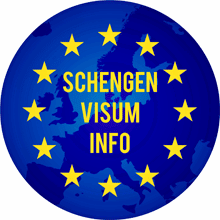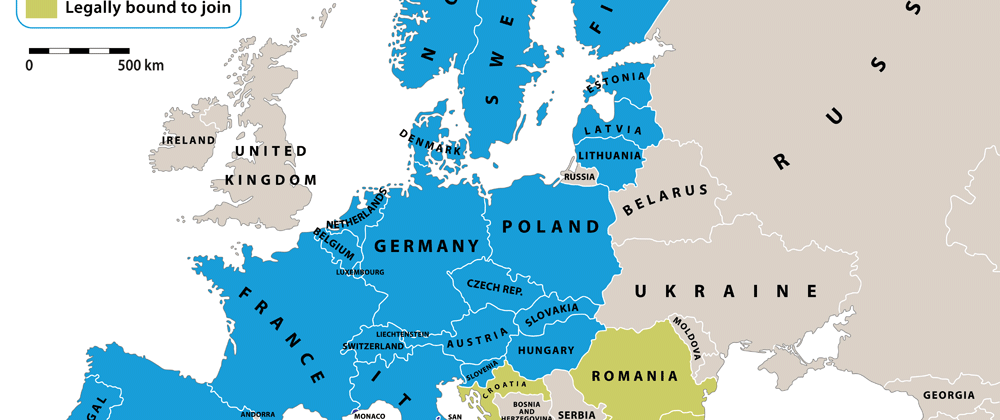The 27 countries of the Schengen area
Like a visa-required foreign guest to The Netherlands or other Schengen countries want to travel for a visit not exceeding 90 days is one for most situations Schengen visa necessary.
The Schengen area is a group of countries in Europe that have abolished their borders. This means that you can travel from Germany to France, for example, without having to show your passport again and again. This way you can easily travel from one country to another, which makes traveling through Europe a lot easier.
Formally, the Schengen countries agreed on the free movement of persons. This means that national border controls within the Schengen zone have been abolished, so that persons without a visa or other travel documents can legally travel from one country to another within the Schengen zone.
The Schengen agreement was signed by five countries in 1985 and has since expanded to the current 27 countries. The newest Schengen country is Croatia, this country joined the Schengen area on 1-1-2023. While the countries in the Schengen zone retain their sovereignty, they share certain security and immigration responsibilities.
Travel to Schengen countries
Only travelers who are in possession of a valid residence permit from one of the Schengen member states or those who are in possession of a 'residence card for family members of a citizen of the Union' from one of the EU countries do not need a visa to enter the EU. Schengen to visit Member States.
The Schengen area is a collaboration of 26 European member states that have a common border and visa policy, we call these countries Schengen countries of Schengen states. The Member States are therefore bound by the same visa rules, which are laid down in the common Visa Code, EU Regulation 810/2009/EC. This allows travelers to move within the entire Schengen area without mutual border checks, visa holders only need one visa - the Schengen visa - to cross the external border of the Schengen area.
Officially this visa is called one short stay visa (VKV), or visa 'type C', but also popularly known as 'tourist visa' or 'Schengen visa'.
List of 27 Schengen countries

The Schengen zone consists of 27 countries:
| Belgium | Denmark | Germany |
| Estonia | Finland | France |
| Greece | Hungary | Italy |
| Latvia | Liechtenstein | Lithuania |
| Luxembourg | Malta | The Netherlands |
| Norway | Austria | Poland |
| Portugal | Slovenia | Slovakia |
| Spain | Czech Republic | Iceland |
| Sweden | Switzerland | Croatia |
Note: The EU countries Bulgaria, Cyprus, Ireland, Romania and the United Kingdom are not Schengen countries.
Traveling in the Schengen area
Passport or other travel document
If you want to travel to other Schengen countries you always need a valid passport or other travel document. Your passport or travel document must not have been issued more than 10 years ago. After leaving the Schengen area, your passport or other travel document is valid for at least 3 months. Remember that Schengen travel insurance is also mandatory.
Traveling with a single entry visa
Immediately 'single entriesVisa allows you to enter the Schengen area once. You may be in the Schengen area for a maximum of 90 days out of 180. During these 90 days you can travel to and stay in all Schengen countries. Are you entering the Schengen area via another country? Then you have to show that the Netherlands is the destination.
Traveling with a multiple-entry visa
Do you have a 'multiple entry' visa, you can enter and leave the Schengen area several times with this visa. The first time you enter the Schengen area, you show that the Netherlands is your destination.
Don't need a visa?
For nationalities who visa-free travel in the Schengen area applies, during the free period you may be in the Schengen area for a maximum of 90 days out of 180. You can also enter and leave the Schengen area during this period.
Visa-required nationalities
Do you have the nationality (passport) of a country requiring a visa and do you want to go to the Netherlands for a maximum of 90 days? Then you have one Schengen visa needed for a short stay. The visa allows you to travel freely in the Netherlands and other Schengen countries within a period of 180 days.
Frequently asked questions and answers about the Schengen area
The Schengen area includes 27 countries ('Schengen States') with no border controls between countries. These countries are: Austria, Belgium, Czech Republic, Denmark, Estonia, Finland, France, Greece, Hungary, Iceland, Italy, Croatia, Latvia, Liechtenstein, Lithuania, Luxembourg, Malta, Netherlands, Norway, Poland, Portugal, Slovakia, Slovenia, Spain, Sweden and Switzerland. With a Schengen visa you can visit all these countries without having to apply for a separate visa.
You may stay in the Netherlands or another Schengen country for a maximum of 90 days with a Schengen visa. After that you have to leave the Schengen area again for 90 days. The definition of "short stay" is a stay of "90 days in 180 days period". The validity of your visa is stated on the visa sticker in your passport. It also states how often you may enter the Schengen area: 1 time, 2 times or more times.
Schengen visas can allow single or multiple entries. Immediately single entry visa you can only enter the Schengen area once. This will be on the visa sticker indicated by “01”. Do you have a multi-entry visa then you can enter the Schengen area several times. You may stay in the Netherlands or the Schengen area for 90 consecutive days. If necessary, the 90 days can also be spread in 180 days. In a period of 180 days, a foreign national requiring a visa may stay in the Schengen area for a maximum of 90 days. You do need a separate visa for this: a multiple entry visa ('several trips'). You can indicate on the application form for a Schengen visa that you need a multiple entry visa.
No, the United Kingdom and Ireland are not Schengen countries and have not been part of the EU since Brexit. These countries each have their own visa policy, so a separate visa is required for these countries. A visa or residence permit from these countries also does not grant access to the Schengen area.
Make sure you have one of them all supporting documents of your visa application have a copy with you. This also applies to the medical Travel Insurance. A Schengen visa never gives automatic access to the Schengen area. Border guards or the Royal Netherlands Marechaussee (KMar) are still allowed to check whether you meet all the requirements and even refuse you entry. The KMar often also asks a few questions about your destination and where you are staying. Therefore, make sure you have the contact details of the sponsor with you or make sure that the referee is present at the airport, so that the KMar can contact the referee if necessary. The sponsor must then submit the original and legalized form 'Proof of guarantee and accommodationto have with you.
No not anymore. Until 1 January 2014, a foreign national who wanted to come to the Netherlands for a maximum period of 90 days had to register with the Aliens Police within 72 hours. Depending on the situation, different rules applied. In anticipation of an amendment to the Aliens Decree, you no longer need to report to the Aliens Police. There is one exception to this new rule. In special cases, the Dutch representation abroad or the Royal Netherlands Marechaussee can impose an obligation on you to report in person to the Aliens Police within three days.
Related articles:






